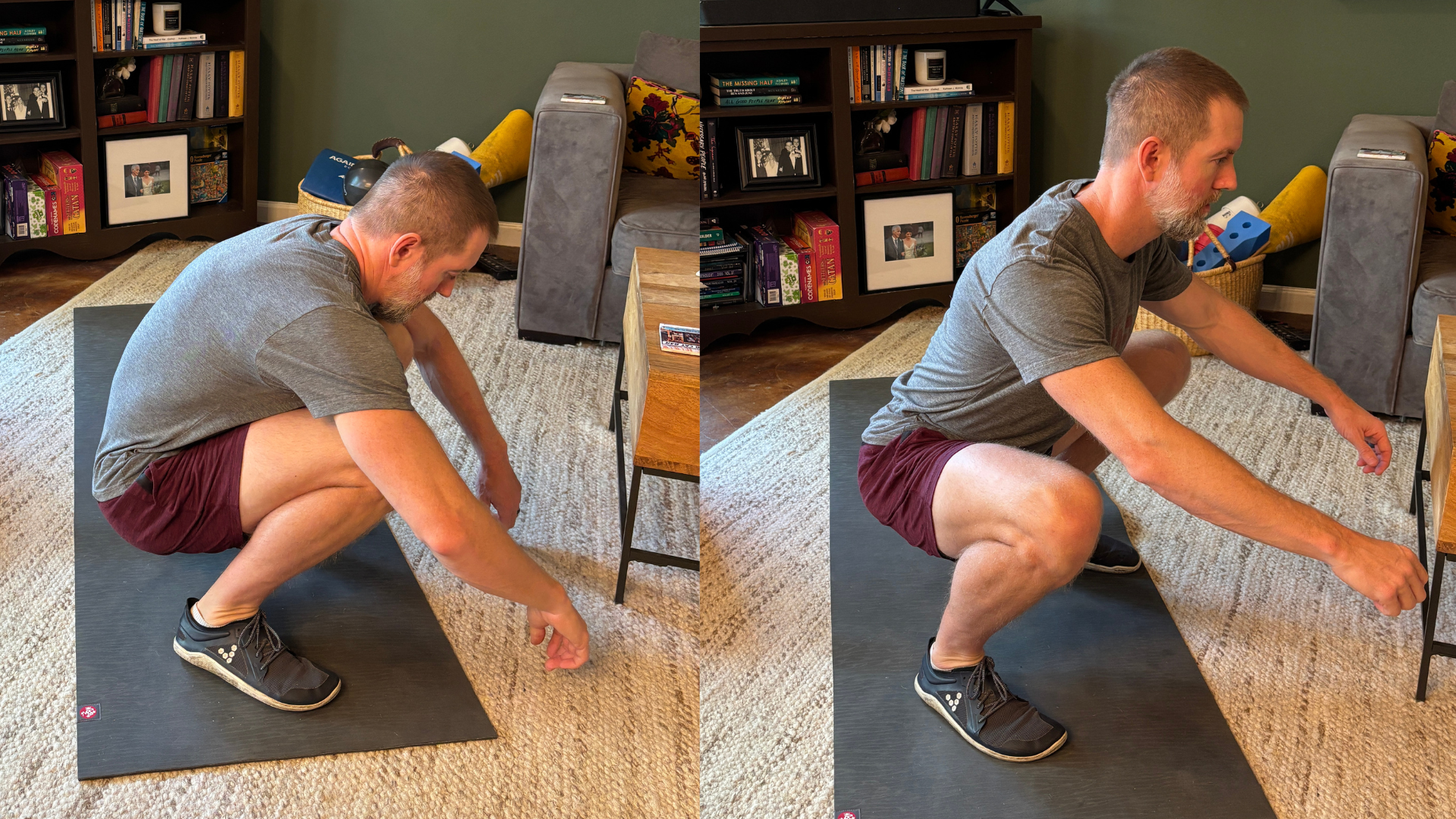Strength Training Essentials - The Force Awakens
Written by Kyle Ligon - MovementLink Head Coach
Back in February 2025’s What’s On My Mind Newsletter titled A Need for Speed, I discussed the importance of applying 100% effort into each and every rep that is intended to develop strength (this also applies for developing speed and power). This method of trying to move the bar as fast as possible with good technique on every single one of your strength training reps is not the default approach most take of simply matching the effort you put in to what the barbell weight requires out of you. Because of the differences between these two approaches, lifters who understand and adopt the 100% effort approach are able to accumulate about 5 times the number of high quality reps in every single strength training session relative to the average gym go-er who is letting their weights dictate their effort level. I am going to build on this idea, so if you missed Part 1, you can visit the original article linked above.
There’s an additional, somewhat counterintuitive aspect to maximizing results from your strength training that relates to this topic, so I felt I needed a follow up to A Need for Speed. I hope you allow me to let my dork show because I’m calling this follow-up, Bar Wars - The Force Awakens. Let’s dive in…
Strength is the amount of force we are capable of exerting against resistance to perform functional tasks. Like the up and coming Jedi, Rey, learning to use The Force, understanding the role of force production across your strength sets and how different weights impact our ability to apply force across sets is essential for being bought in to, not just 100% effort in every rep, but into the weights and rep schemes that will optimally drive your strength gains.
To improve how much weight we can lift, we need to increase the amount of force we are able to produce when we put in 100% effort. In A Need for Speed, the focus was the importance of putting 100% effort into each rep performed, but in this follow-up article I am going to emphasize how the actual barbell weights we are using while we are putting in 100% effort impacts our ability to apply force throughout a set and how, like I always like to mention, more (actually heavier in this case) is not always better — a counterintuitive property of strength training.
For this article, I am going to assume we are already implementing the advanced intent of putting 100% effort on each rep, and compare what our force production at different intensities (percentages of 1 rep max) and how lifting too heavy on your strength sets can actually make you miss out on potential strength gains!
To stay consistent with the examples in A Need for Speed, we are going to be looking at strength training with heavy sets of 5 reps again. We are going to compare 2 scenarios, 1) a set of 5 at or very near a 5 rep max (~85%) and 2) a set of 5 still within a strength building range, but significantly lighter than a 5 rep max weight (75%).
Because each rep we perform fatigues us, as a set goes on, the force we are able to exert (again, assuming 100% effort on every rep) in each subsequent rep will decrease. To simplify how this is presented below, we will say that 100% of the force we would be able to produce is equivalent to saying 100% effort for rep 1 which is equivalent to saying the force we could produce during a 1 rep max. So, if a 5 Rep Max is usually about 87% of a 1 Rep Max, we are going to say that the minimum force required to lift 87% of our max is 87% of the maximum force we are able to produce when fresh. Again, this is just to get the idea across, so hang in there with me…
Note, these are percentages that I made up as estimates to illustrate this concept.
In the table, you can see that the absolute force we are able to produce on reps goes down faster with the heavier weight because heavier weight is more fatiguing to lift and therefore we are more tired after each rep from lifting heavier weight than lighter weight. This is the counterintuitive nature of how heavy we are lifting inversely impacting the forces we are able to produce on each rep throughout a set. I can actually generate higher average force per rep with lighter weights because each rep causes less fatigue. If we took the percentage of 1 rep max down to an extremely low level, like 20%, we could actually put almost 100% force into every rep; this is what speed and power training is.
Strength is optimally built by applying forces at 90% or more of the maximum force we can produce with resistances of 75% or more of a 1 rep max. You can see that when we use weights around that 75% of a 1 rep max number, well below our 5 rep max weights (~87%), we can be within this optimal strength development resistance range and, because of the relatively lighter weight, produce a higher number of reps that meet the force requirement of being above 90%. This has a few benefits:
More reps at higher forces make us better at producing higher forces, increasing our strength.
Less fatigue from using lighter weights allows us to perform more work, put in higher intensities elsewhere, or simply carry less fatigue into our upcoming workouts.
Lighter weights carry less injury risk.
Lighter weights provide more opportunity to develop technique.
Quick programming terminology notes:
RPE, Relative Perceived Exertion, is a 1-10 scale that measures how hard an athlete feels the effort is. In MovementLink Programming we like prescribing bigger sets with Reps in Reserve instead of prescribing a specific number of reps, or, to say it another way, reps shy of failure. A set going to 0 Reps in Reserve would be a max set which would also be a 10 RPE. A set taken to 2 Reps in Reserve may be doing 8 reps if you could have done 10; this would also be an 8 RPE.
Our first set of 5 at 85% of a max would be an RPE of about 9.5. A set of 5 at 75% would likely be an RPE of about 8. To be clear, I’m not advocating that we never do a set of 5 at 85%, but I am advocating to also do sets at 75% and in between. The mistake most advanced athletes make is that they feel like if their strength sets are not at an RPE of 10, they aren’t going to make any progress and that simply is not the case…they may actually be making less progress by always using too high of an RPE and not being able to apply higher forces.
An additional consideration is that this change of force production due to fatigue compounds on itself in subsequent sets. The above example was only set 1, but to get at least above Minimal Effective Volume (the minimum amount of work we need to do to elicit results), we will need multiple sets. Let’s look at a second set at the same percentages as above. If the first set of 5 at 85% was an RPE of 9.5, but the fatigue from set 1 will make the second set almost a 10.
Note, again, these are percentages that I made up as estimates to illustrate this concept.
Again, reps using forces of 90% or more of what you can possibly apply produce the biggest strength gains, and you can see in the above chart that the set heavier weight (85%) only has 2 high quality strength reps where as the relatively lighter weight (75%) has 5 high quality strength reps. This is a bigger difference than set 1 not just because of the fatigue from each rep in the set, but the fatigue from the previous set.
In MovementLink programming, to account for all of this in our strength training, we use a mixture of increasing the average weights we use across a 3 week cycle, with the starting weeks being closer to the 75% range and the final week being closer to the rep max weights. Additionally, within each strength workout, we also tend to hit a higher percentage set as our first working set when we are fresher and then drop the weight a bit for subsequent sets to allow the force we can produce to stay in optimal ranges. Again, that is all on paper — You still need to put 100% effort into every rep and do your best to use your 1 rep max estimates to have the proper weights on the bar.
Now, if you’re like me, and most people, and only have a general idea of what your 1 rep max is for any given lift on any given day, that’s OK. The good news is that this strategy also has the largest margin for error on selecting weights. As long as you put in 100% effort with any weight and you’re in the ballpark with your estimates, you’ll be close enough to the correct ranges to get extremely good strength gains.
Article: Estimating 1 Rep Maxes
One last reminder specific to those following the MovementLink program: Overloading is an extremely important aspect to getting stronger, meaning that moving from one 25-week macrocycle to the next, we need to use heavier and heavier weights. In MovementLink programming, our strength training percentages are based on what you’d (reasonably) like your max to be at the end of the cycle. So, if you currently have a 190lb back squat, 200lbs would be a reasonable goal (2-5% gains per cycle are reasonable), so you’d use 200lbs as your back squat number to calculate all your percentages that cycle. And then the next cycle, maybe you bump that up again to 210.
If you are more of a beginner (within your first year), strength gains can be much greater than that 2-5% a cycle, so the MovementLink coaches can help you estimate your maxes for each 3 week cycle by watching you lift in class.
In short, when strength is the intent, put 100% effort into every lift and do you best to use the percentages prescribed and don’t fall for the more is better trap. Max effort on every rep even when max effort is not required is the secret to big strength improvements.











